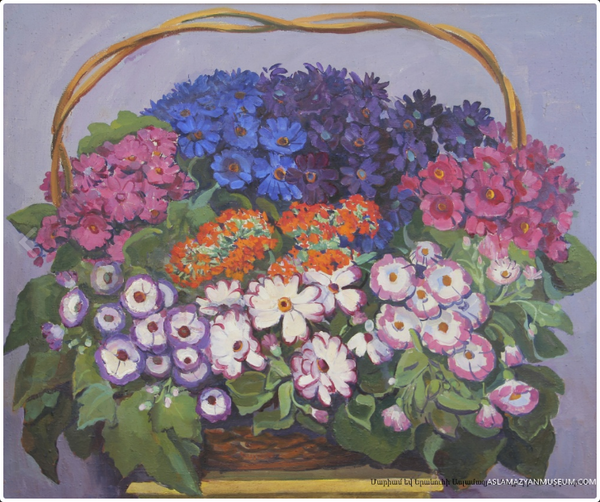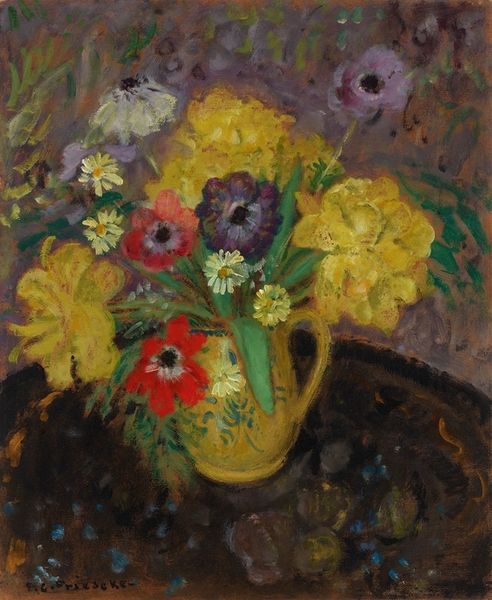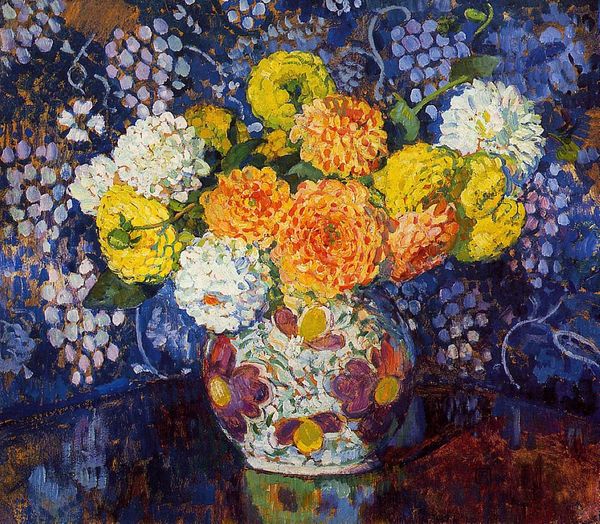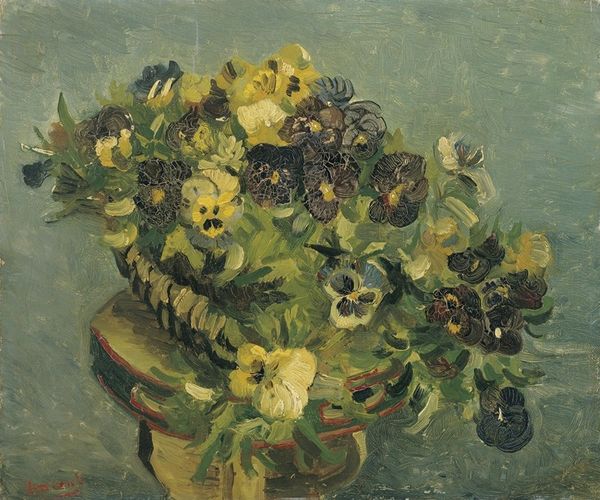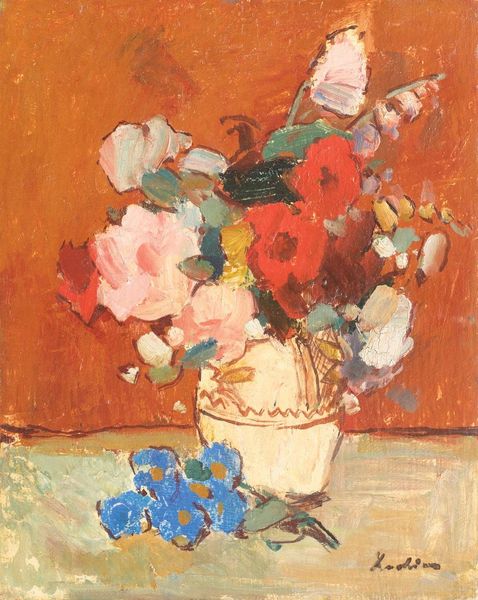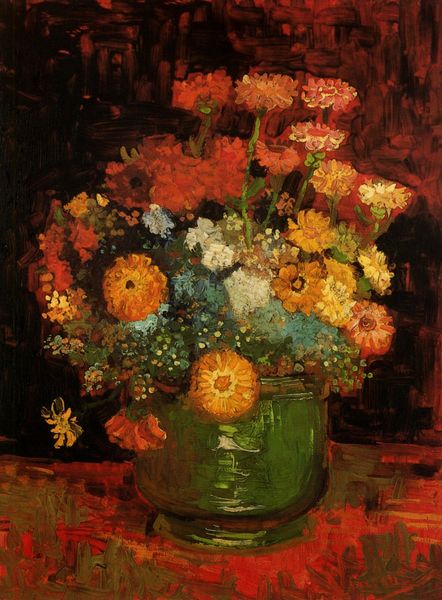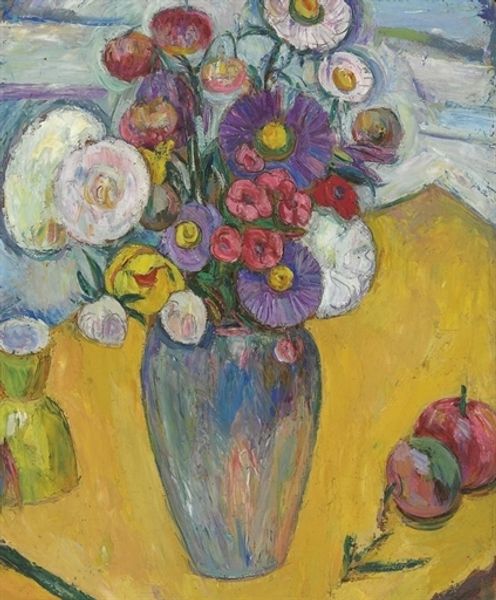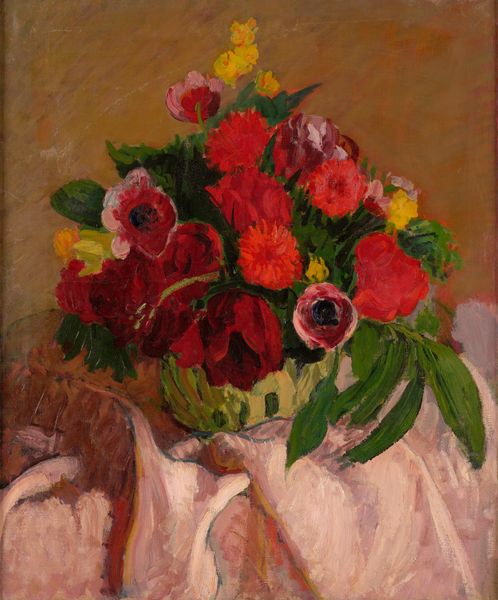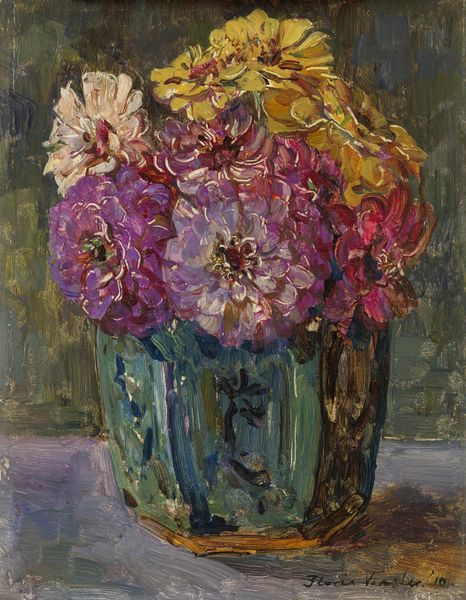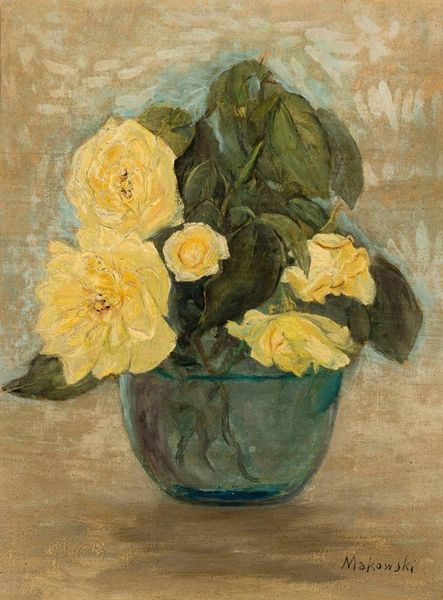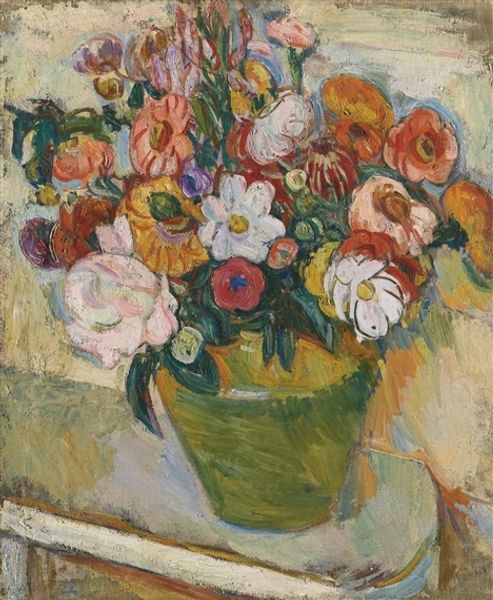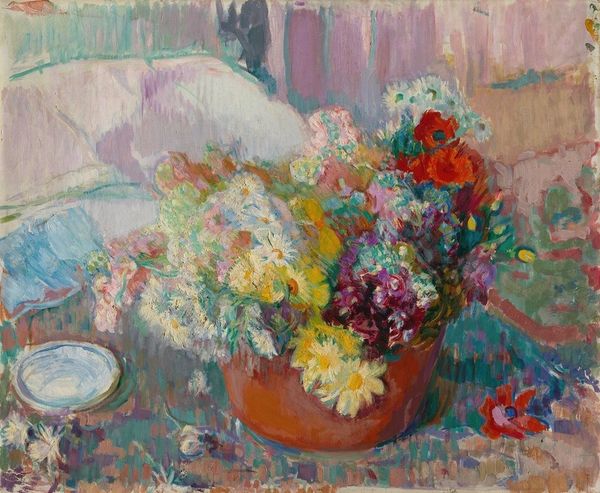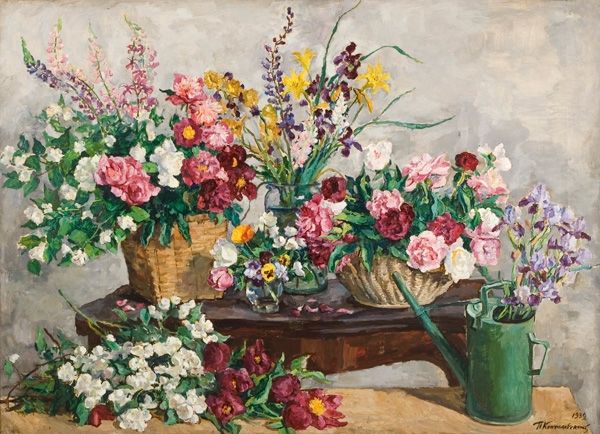
oil-paint
#
oil-paint
#
oil painting
#
geometric
#
expressionism
Dimensions: 50 x 50.1 cm
Copyright: Public domain
Curator: Koloman Moser's "Primmeln in the Basket," painted in 1912, greets us today. He worked with oil paint to render the lovely scene before us. Editor: There's a disarming charm to it, don't you think? The colors—yellows, whites, and those subdued greens—almost vibrate off the canvas. The geometric construction creates the composition of forms here in quite interesting ways. Curator: It's important to understand the social context in which Moser was creating. As part of the Wiener Werkstätte, he sought to blur the lines between fine art and craft. This painting reflects a similar attitude by celebrating everyday beauty found within a domestically crafted item, such as a basket. Editor: True, the materiality of the paint application here is very important; one cannot help but think of Van Gogh's treatment of the flowers as subjects in still life. Note how Moser builds up the impasto to create this tactile quality which renders the forms of each bloom and the woven structure of the basket. It is incredibly dynamic! Curator: Exactly. Baskets themselves have a rich history—their crafting passed down through generations of mostly female laborers. What might this symbolize about the undervalued work that sustains our homes? Editor: Well, structurally, the contrast between the woven basket and the organic forms of the primroses adds an important visual tension. And look closely at how Moser balances the composition by using color to direct the eye, for instance, the careful distribution of the white blossoms against the predominantly yellow tones. Curator: I think you bring up important structural ideas and observations. The consumption of domestic comfort and natural beauty was of great significance during that era; as society and technological progress pushed ever forward, many would hold onto these traditional arts, styles and crafts. Editor: Agreed. Considering the formal choices, Koloman Moser provides us with an exercise in harmonic color relationships, doesn’t he? Thank you. Curator: A pleasure to explore Moser’s process of creation and what role society plays within the home, thanks to you as well.
Comments
No comments
Be the first to comment and join the conversation on the ultimate creative platform.
